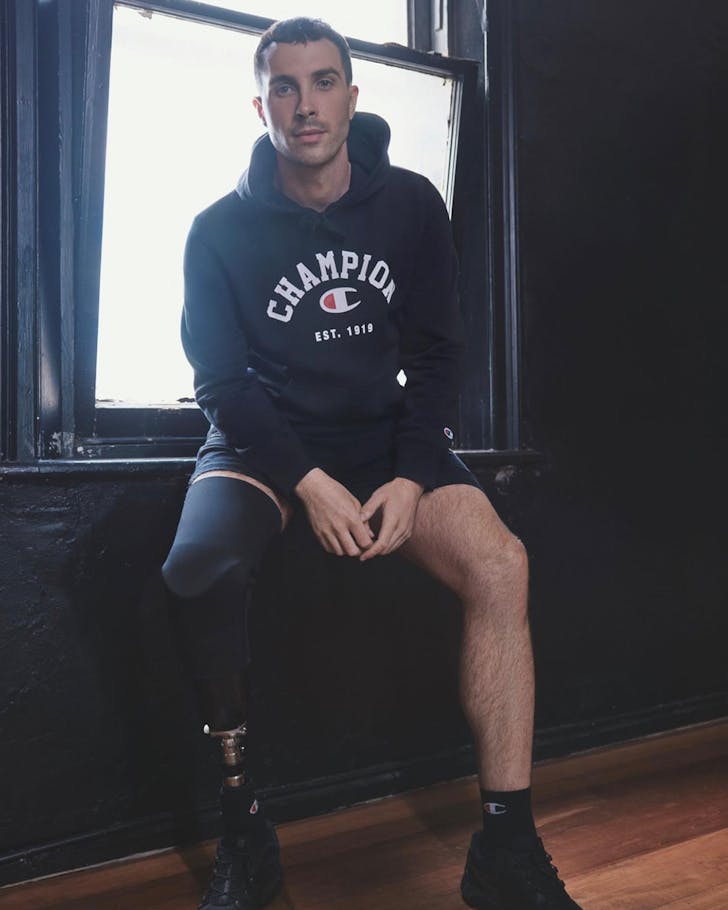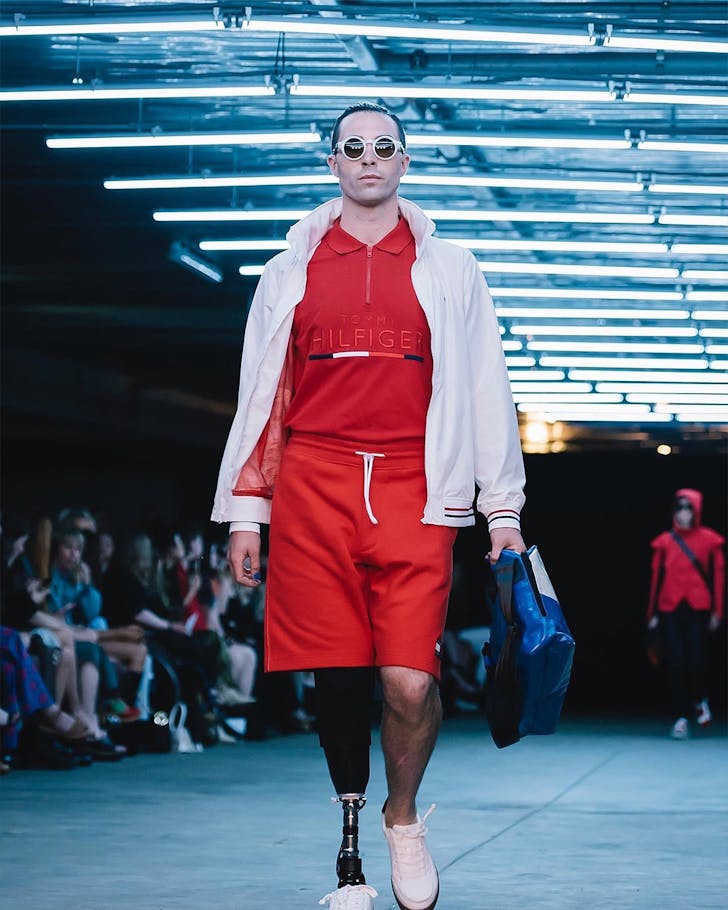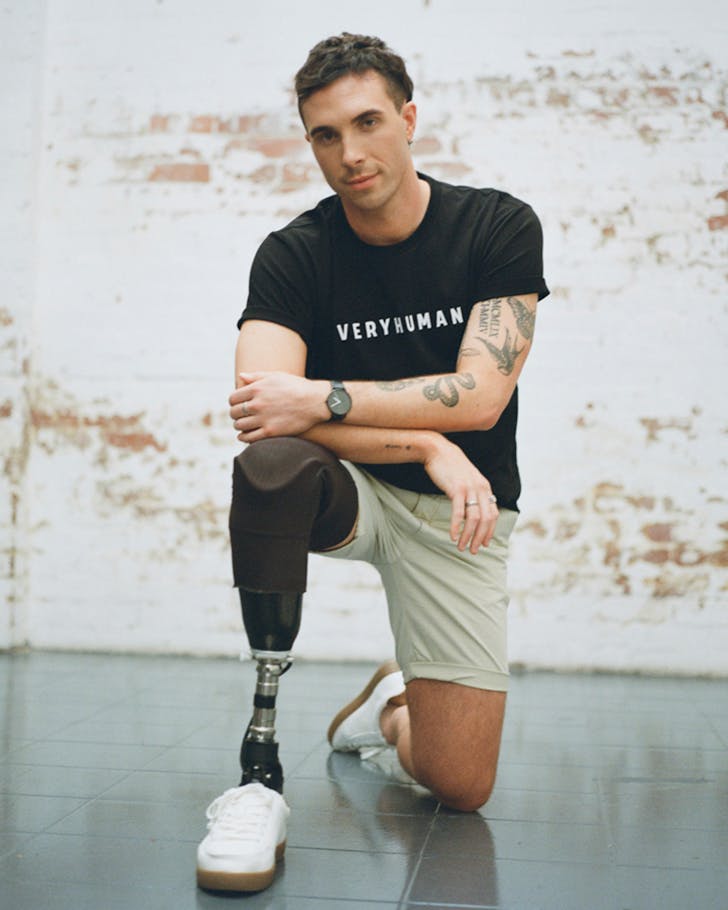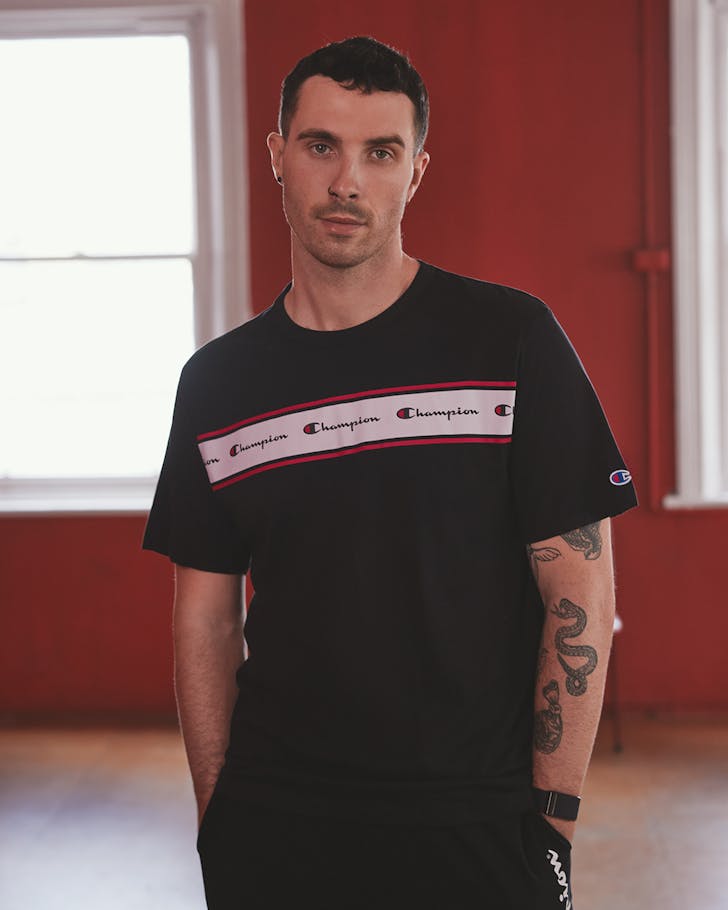Why Disability Representation Is So Important
James Parr is Urban List’s October guest editor. A Wiradjuri man, James is a force to be reckoned with. An education support and welfare officer, a model, actor, triathlete and disability advocate, he captured the nation's attention on the runway at two of the most pivotal moments in Australia’s fashion history—sporting JAM The Label at the Adaptive Clothing Collective show at AAFW and wearing Paul McCann and Clothing The Gaps at the First Nations Fashion + Design Show.
For 21 years of my life, I was able-bodied.
In those years, I had rarely seen people with a disability positively represented. So, when I was diagnosed with cancer at that age and had below my right knee amputated, I struggled with having to perceive myself as someone who was now disabled.
When I went from being able-bodied to disabled, I had realised that there was such a sad and negative attachment that was associated with having a disability. I struggled to accept myself as a person with a disability and felt shame for who I was. I doubted myself, my abilities, my goals in life, what I wanted to achieve and especially, the way I looked at myself with a prosthetic.

I would sit endlessly on social media looking and searching for other people with a disability or a prosthetic, hoping to connect and relate to others so that I felt seen. I just wanted to be represented so that I didn’t feel alone.
Living in a consumer driven world, where we are constantly exposed to able-bodied imagery in social media, advertising, and the news; people with a disability are repeatedly left out and forgotten about which made me feel so small.
According to the World Health Organisation, 15 per cent of the global population is reported to have a form of disability. Although we are a minority group, we are the largest minority group—so why are people with a disability still repeatedly underrepresented?

The pressure I felt because of society’s views of someone with a disability also came down to the serious lack of representation. In the media, there has previously been a strong narrative that having a disability is associated with sadness, negativity or being viewed as an outcast.
Constantly, I have strangers telling me how sad or sorry they are for me.
This lack of representation for people with a disability causes communities to view us ‘less than’ able-bodied individuals which often leads people to wonder how they could live their life having a disability or that having a disability is the worst-case scenario in life.I will add that I too once had those thoughts. Which is exactly why representation is so important.

Recently, I was in an elevator, along with two other teenage girls. They stared at me and looked me up and down.
As I stepped out, one quickly blurted out—
“That’s so sad that you have one leg. I feel so sorry for you.”
I was left feeling devalued, embarrassed, and ashamed of myself as the elevator doors closed.
I wasn’t mad at them; I was mad that there isn’t enough positive representation in the media to have taught them that it isn’t a bad or sad thing to have a disability.
Representation can shift societal views and have a transformation in how people with disabilities are seen and treated. Some people may be less comfortable or haven’t yet accepted their disability, so constantly hearing or seeing the negative representation in media reiterates that they should feel a certain way about themselves and make it harder to accept; exactly how I once felt.
When I first began modelling, I knew that it was my opportunity to provide that representation I once needed and to encourage others to be seen and heard.

Although we are in the infancy stage, the cogs are slowly turning and we are starting to see better representation in fashion and on TV. As of late, we have seen such a positive portrayal of people with a disability and its subsequent celebration in Australia through Chloé Hayden on Netflix’s reboot of Heartbreak High, a neurodivergent actress who depicted one of the most realistic presentations of autism via her character ‘Quinni’. I think we can all agree this casting will change the trajectory of representation forever.
Elsewhere in the world, TV leaders in the UK are set to congregate at an event titled ‘About Time!’ on October 28. The event will call on industry professionals to action five commitments crafted to improve representation in all kinds of key roles for those who may be deaf, living with a disability or neurodivergent.
In the realm of fashion, you would have hopefully seen Double Take’s recent show at New York Fashion Week in early September, a first of its kind runway show featuring accessible adaptive clothing for those with spinal muscular atrophy—it was huge. Even earlier in May, your social feeds would have been pummelled with epic runway montages from the Adaptive Clothing Collective Runway, another first of its kind show featured at Afterpay Australia Fashion Week that exclusively championed looks specifically created for those with a disability.
Progressive brands like Tommy Hilfiger, Skims, Boss, M&S and Topshop are also major players in this space but representation is important at so many levels and we can all do our part to improve it.
Image credit: Supplied
